-
 Bitcoin
Bitcoin $108,703.4836
0.45% -
 Ethereum
Ethereum $2,576.6839
1.58% -
 Tether USDt
Tether USDt $1.0001
0.00% -
 XRP
XRP $2.2924
-0.87% -
 BNB
BNB $660.2136
0.01% -
 Solana
Solana $151.4729
-0.29% -
 USDC
USDC $1.0000
0.00% -
 TRON
TRON $0.2866
0.04% -
 Dogecoin
Dogecoin $0.1698
0.82% -
 Cardano
Cardano $0.5831
0.13% -
 Hyperliquid
Hyperliquid $37.9814
-3.97% -
 Bitcoin Cash
Bitcoin Cash $503.9489
1.93% -
 Sui
Sui $2.8994
0.74% -
 Chainlink
Chainlink $13.5429
0.38% -
 UNUS SED LEO
UNUS SED LEO $9.0693
-0.19% -
 Stellar
Stellar $0.2524
0.15% -
 Avalanche
Avalanche $18.1959
1.02% -
 Shiba Inu
Shiba Inu $0.0...01180
1.48% -
 Toncoin
Toncoin $2.7601
-0.76% -
 Hedera
Hedera $0.1606
0.96% -
 Litecoin
Litecoin $86.6105
0.26% -
 Monero
Monero $315.7691
-0.56% -
 Polkadot
Polkadot $3.3911
0.25% -
 Dai
Dai $1.0001
0.03% -
 Ethena USDe
Ethena USDe $1.0002
0.02% -
 Bitget Token
Bitget Token $4.3076
-0.05% -
 Uniswap
Uniswap $7.5901
3.66% -
 Aave
Aave $288.0954
0.35% -
 Pepe
Pepe $0.0...01002
1.64% -
 Pi
Pi $0.4578
0.09%
How to avoid MetaMask phishing scams?
Stay vigilant against MetaMask phishing scams by verifying websites, never sharing your recovery phrase, and enabling 2FA for added security.
Jul 08, 2025 at 11:35 pm
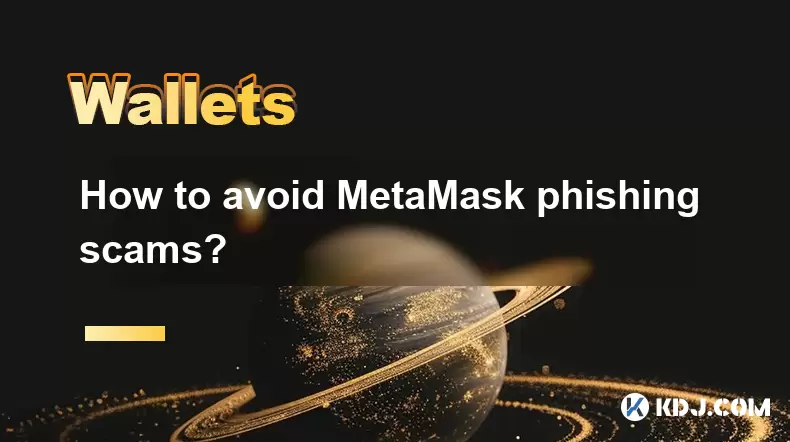
Understanding MetaMask Phishing Scams
MetaMask phishing scams are deceptive tactics used by cybercriminals to trick users into revealing their secret recovery phrases, private keys, or wallet passwords. These scams often involve fake websites, fraudulent pop-ups, or misleading links that mimic the genuine MetaMask interface. Once scammers gain access to your sensitive information, they can drain your digital assets instantly.
Phishing attacks typically exploit human psychology through urgency or fear, prompting victims to act without verifying the source. Some phishing attempts may appear as official-looking emails claiming your wallet is compromised or needs verification. Always verify the authenticity of any message before taking action.
Recognizing Common Phishing Techniques
Cybercriminals use a variety of methods to deceive MetaMask users. One common tactic involves malicious browser extensions that imitate the real MetaMask extension. These clones prompt users to enter their seed phrases or login credentials under false pretenses.
Another technique includes fake transaction requests, where users are lured into signing malicious transactions disguised as routine approvals. These transactions often grant attackers full control over the victim's wallet without the user realizing it.
Additionally, social engineering via Discord, Telegram, or Twitter DMs has become increasingly prevalent. Scammers pose as customer support agents or project team members and ask for wallet details under the guise of troubleshooting or assistance.
Securing Your MetaMask Wallet Effectively
To protect your MetaMask wallet from phishing attempts, always ensure you're using the official browser extension downloaded directly from MetaMask’s verified website. Avoid installing extensions from third-party stores or clicking on suspicious links promising free tokens or wallet upgrades.
Never share your 12-word recovery phrase with anyone, including individuals claiming to be MetaMask support staff. Genuine support teams will never ask for this information. Store your recovery phrase securely offline and avoid typing it into any application unless reinstalling MetaMask on a trusted device.
Enable two-factor authentication (2FA) for any associated accounts, especially if you connect your wallet to decentralized applications (dApps). This adds an extra layer of protection against unauthorized access.
- Only interact with known and trusted dApps.
- Double-check URLs before connecting your wallet.
- Review transaction details carefully before approving.
Verifying Website Authenticity Before Use
One of the most critical steps in avoiding MetaMask phishing scams is confirming the legitimacy of any website you visit. Always type https://metamask.io directly into your browser's address bar instead of following links from unknown sources.
Check for the presence of a valid SSL certificate by looking for a padlock icon next to the URL. While this doesn't guarantee safety, it reduces the risk of landing on a spoofed site. Also, bookmark the official MetaMask site to prevent accidental redirection to fake domains.
Be wary of domains like "metamasks.io" or "metamask-support.com"—these are not affiliated with the real service. Cybercriminals often register similar-sounding domains to confuse users.
Responding to Suspected Phishing Attempts
If you suspect you've encountered a phishing scam, disconnect immediately from the suspicious site and close the browser tab. Do not attempt to log in or input any personal information.
Report the phishing attempt to MetaMask through their official channels. You can submit suspected phishing sites via their fraud reporting form available on the MetaMask website. Providing accurate details helps them take down malicious content faster.
If you believe your wallet has been compromised, move your funds to a new wallet created on a different device. Export your current wallet’s private key or mnemonic phrase only after ensuring your environment is secure and free from malware.
- Scan your system for malware using trusted antivirus software.
- Avoid reusing passwords across multiple platforms.
- Monitor your transaction history regularly for unauthorized activity.
Frequently Asked Questions
Q: Can I recover my funds if I fall victim to a MetaMask phishing scam?
Unfortunately, blockchain transactions are irreversible. If your funds were transferred to another wallet, there is no way to retrieve them unless the recipient voluntarily returns them.
Q: How do I know if an email claiming to be from MetaMask is legitimate?
MetaMask does not send unsolicited emails asking for personal information. Check the sender’s email address for legitimacy and look for generic greetings or urgent language—common signs of phishing.
Q: Is it safe to store my recovery phrase digitally?
Storing your recovery phrase digitally increases the risk of exposure to hackers. It's recommended to write it down on paper and keep it in a secure physical location.
Q: Are mobile MetaMask users also vulnerable to phishing attacks?
Yes, mobile users face similar risks as desktop users. Always download the app from official app stores and avoid clicking on suspicious links within messages or social media platforms.
Disclaimer:info@kdj.com
The information provided is not trading advice. kdj.com does not assume any responsibility for any investments made based on the information provided in this article. Cryptocurrencies are highly volatile and it is highly recommended that you invest with caution after thorough research!
If you believe that the content used on this website infringes your copyright, please contact us immediately (info@kdj.com) and we will delete it promptly.
- Kraken, Rear Wing, and Memecoins: A Wild Ride to the Singapore Grand Prix!
- 2025-07-09 00:50:12
- Cronos Skyrockets: Decoding the Reasons Behind CRO's Crypto Surge
- 2025-07-09 01:30:12
- Ethereum's Wall Street Love & Ruvi AI's Audit Rally: A Crypto Cocktail
- 2025-07-09 00:55:12
- Crypto Coins with Growth Potential: Top Picks for Savvy Investors
- 2025-07-09 01:35:13
- Onyxcoin (XCN) vs. Solana (SOL): A Promising Bet in the Crypto Game?
- 2025-07-09 00:30:12
- Pi Network's Supply Surge: A Recipe for Price Problems?
- 2025-07-09 02:10:13
Related knowledge

What happens if I forget my Trezor passphrase
Jul 09,2025 at 03:15am
Understanding the Role of a Trezor PassphraseIf you use a Trezor hardware wallet, you may have set up a passphrase as an extra layer of security beyon...
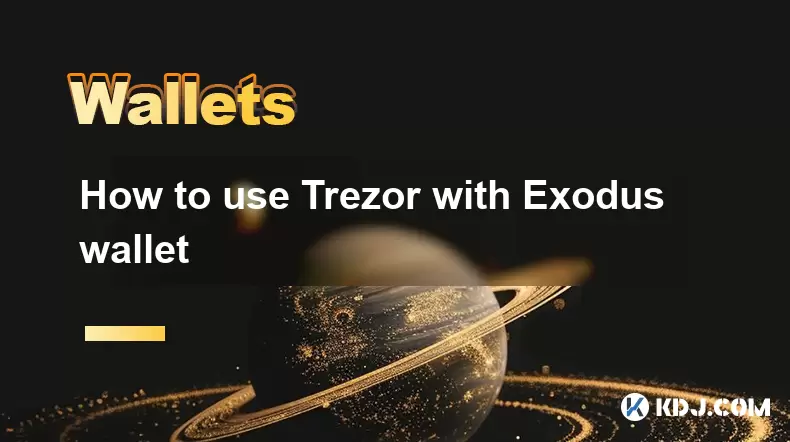
How to use Trezor with Exodus wallet
Jul 09,2025 at 12:49am
Connecting Trezor Hardware Wallet to Exodus Software WalletTo use Trezor with Exodus wallet, users need to connect the hardware wallet to the software...
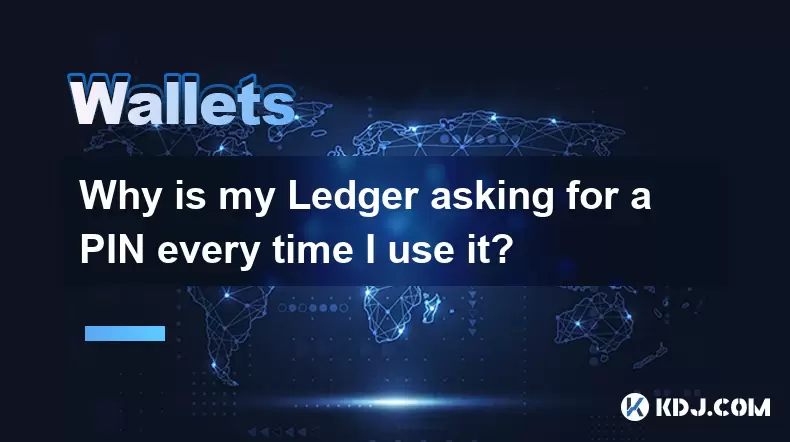
Why is my Ledger asking for a PIN every time I use it?
Jul 08,2025 at 11:21pm
Understanding the Purpose of the PIN on Your Ledger DeviceThe PIN (Personal Identification Number) is a crucial security feature built into every Ledg...
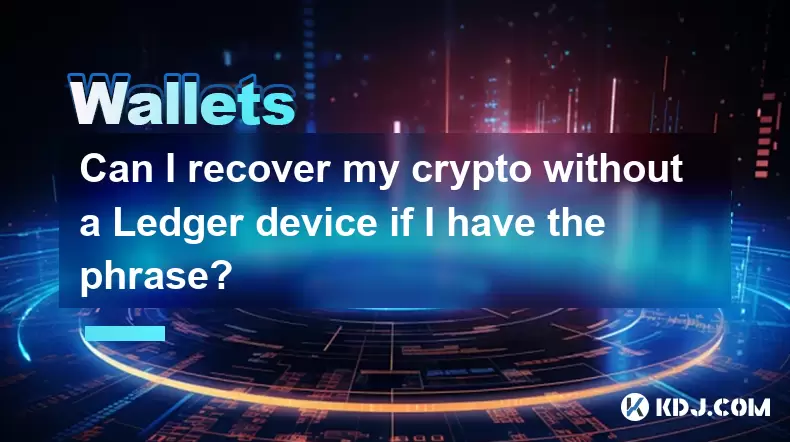
Can I recover my crypto without a Ledger device if I have the phrase?
Jul 09,2025 at 01:36am
Understanding the Role of a Recovery Phrase in Crypto SecurityIf you have your recovery phrase but no Ledger device, you might wonder whether it's pos...

Can I have multiple PIN codes on one Ledger?
Jul 09,2025 at 12:35am
Understanding the Basics of Decentralized Exchanges (DEXs)A decentralized exchange, or DEX, is a type of cryptocurrency trading platform that operates...
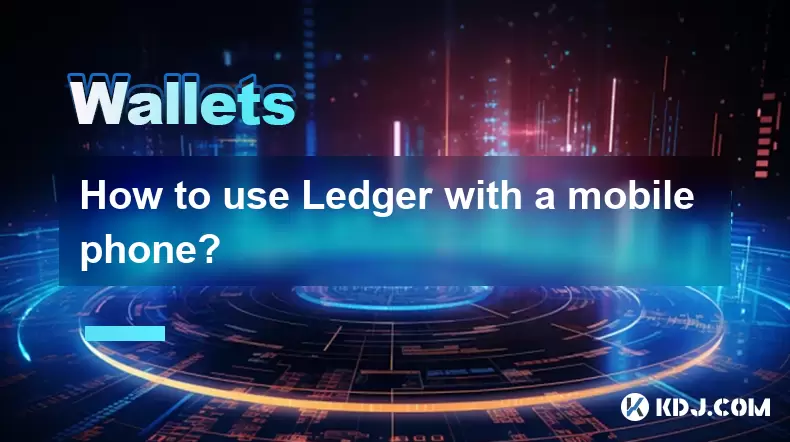
How to use Ledger with a mobile phone?
Jul 08,2025 at 10:49pm
Connecting Ledger Hardware Wallet to Mobile DevicesUsing a Ledger hardware wallet with a mobile phone provides a secure and convenient way to manage c...

What happens if I forget my Trezor passphrase
Jul 09,2025 at 03:15am
Understanding the Role of a Trezor PassphraseIf you use a Trezor hardware wallet, you may have set up a passphrase as an extra layer of security beyon...

How to use Trezor with Exodus wallet
Jul 09,2025 at 12:49am
Connecting Trezor Hardware Wallet to Exodus Software WalletTo use Trezor with Exodus wallet, users need to connect the hardware wallet to the software...

Why is my Ledger asking for a PIN every time I use it?
Jul 08,2025 at 11:21pm
Understanding the Purpose of the PIN on Your Ledger DeviceThe PIN (Personal Identification Number) is a crucial security feature built into every Ledg...

Can I recover my crypto without a Ledger device if I have the phrase?
Jul 09,2025 at 01:36am
Understanding the Role of a Recovery Phrase in Crypto SecurityIf you have your recovery phrase but no Ledger device, you might wonder whether it's pos...

Can I have multiple PIN codes on one Ledger?
Jul 09,2025 at 12:35am
Understanding the Basics of Decentralized Exchanges (DEXs)A decentralized exchange, or DEX, is a type of cryptocurrency trading platform that operates...

How to use Ledger with a mobile phone?
Jul 08,2025 at 10:49pm
Connecting Ledger Hardware Wallet to Mobile DevicesUsing a Ledger hardware wallet with a mobile phone provides a secure and convenient way to manage c...
See all articles

























































































